1. Suhartanto D, Ali MH, Tan KH, Sjahroeddin F, Kusdibyo L. Loyalty toward online food delivery service: the role of e-service quality and food quality. J Foodserv Bus Res. 2019; 22:81–97.
2. Goh SK, NG SR, Wong SY, Chong L. Outsourcing to online food delivery services: perspective of F&B business owners. J Internet Bank Commer. 2017; 22:1–18.
5. Daim TU, Basoglu AN, Gunay D, Yildiz C, Gomez F. Exploring technology acceptance for online food services. Int J Bus Inf Syst. 2013; 12:383–403.
6. Won J, Kang H, Kim B. The effect of food online-to-offline (O2O) service characteristics on customer beliefs using the technology acceptance model. Culin Sci Hosp Res. 2017; 23:97–111.
7. Lee EY, Lee SB, Jeon YJ. Factors influencing the behavioral intention to use food delivery service apps. Soc Behav Personal. 2017; 45:1461–1473.
8. Preetha S, Iswarya S. Factors influencing the intension to use food online order and delivery appvia platforms-using TAM (Technology Acceptance Model). Int J Recent Technol Eng. 2019; 7:1141–1146.
9. Rha JY, Lee B, Nam Y, Yoon J. COVID-19 and changes in Korean consumers’ dietary attitudes and behaviors. Nutr Res Pract. 2021; 15:S94–109. PMID:
34909136.
10. Hossain F, Adelaja AO. Consumers’ interest in alternative food delivery service systems: Results from a consumer survey in New Jersey. J Food Distrib Res. 2000; 31:49–67.
11. Yeo VC, Goh SK, Rezaei S. Consumer experiences, attitude and behavioral intention toward online food delivery service (OFD) services. J Retailing Consum Serv. 2017; 35:150–162.
12. Wang O, Somogyi S, Charlebois S. Food choice in the e-commerce era: a comparison between business-to-consumer (B2C), online-to-offline (O2O) and new retail. Br Food J. 2020; 122:1215–1237.
13. Ceniti C, Tilocca B, Britti D, Santoro A, Costanzo N. Food safety concerns in “COVID-19 era”. Microbiol Res (Pavia). 2021; 12:53–68.
14. Hong C, Choi H, Choi EK, Joung HW. Factors affecting customer intention to use online food delivery services before and during the COVID-19 pandemic. J Hosp Tour Manage. 2021; 48:509–518.
15. Fabrigar LR, Wegener DT, MacCallum RC, Strahan EJ. Evaluating the use of exploratory factor analysis in psychological research. Psychol Methods. 1999; 4:272–299.
16. Cudeck R. Exploratory factor analysis. Tinsley HEA, Brown SD, editors. Handbook of Applied Multivariate Statistics and Mathematical Modeling. Cambridge (MA): Academic Press;2000. p. 265–296.
17. Widaman KF. Exploratory factor analysis and confirmatory factor analysis. Cooper H, editor. APA Handbook of Research Methods in Psychology. Washington, D.C.: American Psychological Association;2012.
18. Hirschberg C, Rajko A, Schumacher T, Wrulich M. The Changing Market for Food Delivery Service. Berlin: McKinsey & Company;2016.
19. Molina-Besch K. Food delivery service packaging and tableware waste. Nat Food. 2020; 1:531–532. PMID:
37128010.
20. Song G, Zhanga H, Duana H, Xub M. Packaging waste from food delivery service in China’s mega cities. Resour Conserv Recycl. 2018; 130:226–227.
21. Li C, Mirosa M, Bremer P. Review of online food delivery service platforms and their impacts on sustainability. Sustainability. 2020; 12:5528.
23. Broom D. South Korea Once Recycled 2% of Its Food Waste. Now It Recycles 95%. Cologny: World Economic Forum;2019.
24. Maimaiti M, Zhao X, Jia M, Ru Y, Zhu S. How we eat determines what we become: opportunities and challenges brought by food delivery industry in a changing world in China. Eur J Clin Nutr. 2018; 72:1282–1286. PMID:
30185849.
26. Ministry of Food and Drug Safety (KR). 2018 Ministry of Food and Drug Safety White Paper. Sejong: Ministry of Food and Drug Safety;2018.
27. World Health Organization. COVID-19 and Food Safety: Guidance for Food Businesses. Geneva: World Health Organization;2020.
28. Amin A, Arefin S, Alam R, Ahammad T, Hoque R. Using mobile food delivery service applications during COVID-19 pandemic: an extended model of planned behavior. J Food Prod Mark. 2021; 27:105–126.
29. Wolfson JA, Smith KC, Frattaroli S, Bleich SN. Public perceptions of cooking and the implications for cooking behaviour in the USA. Public Health Nutr. 2016; 19:1606–1615. PMID:
26794207.
30. Sidenvall B, Nydahl M, Fjellström C. The meal as a gift-The meaning of cooking among retired women. J Appl Gerontol. 2000; 19:405–423.
31. Kotler PT, Bowen JT, Makens J, Baloglu S. Marketing for Hospitality and Tourism. New York (NY): Pearson;2017.
32. Gunden N, Morosan C, DeFranco A. Consumers’ intentions to use online food delivery service systems in the USA. Int J Contemp Hosp Manag. 2020; 32:1325–1345.
33. Annaraud K, Berezina K. Predicting satisfaction and intentions to use online food delivery service: what really makes a difference? J Foodserv Bus Res. 2020; 23:305–323.
34. Jones R. The Future of Food Delivery Service Platforms. London: Lexology;2021.
35. Babar Y, Adeli A, Greenwood BN. Cooking or clicking: The impact of online food delivery service platforms on domestic food preparation. SSRN. 2021.
37. Davies A, Cretella A, Edwards F, Marovelli B. The social practices of hosting P2P social dining events: Insights for sustainable tourism. J Sustain Tour. 2022; 30:1004–1019.
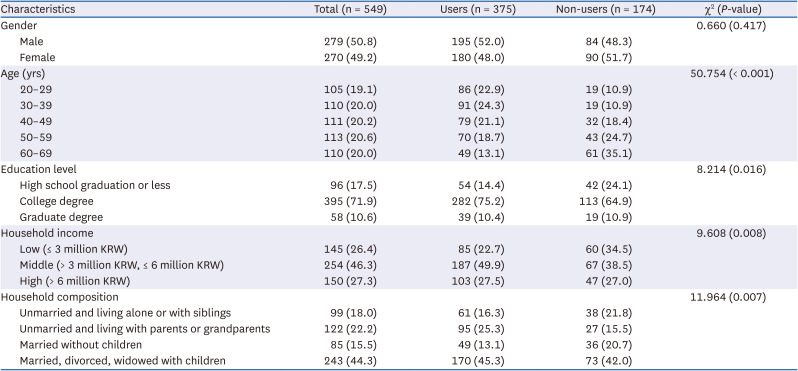
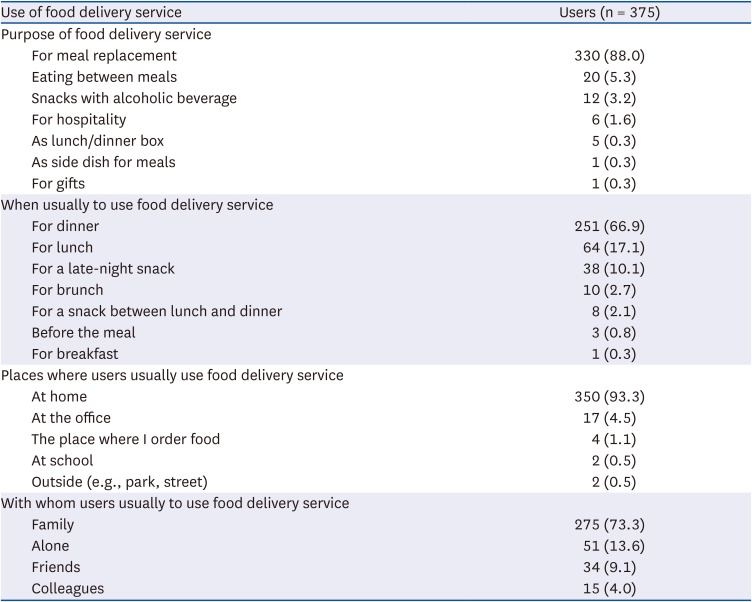
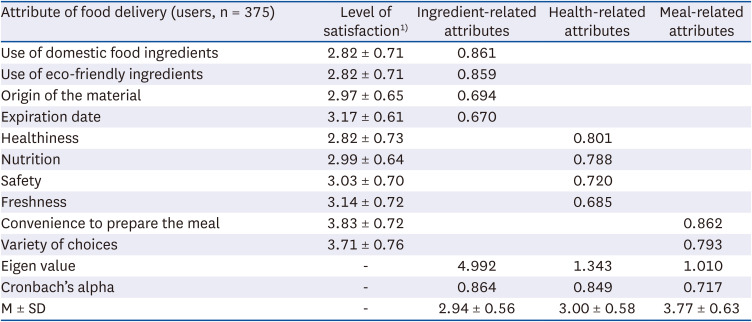
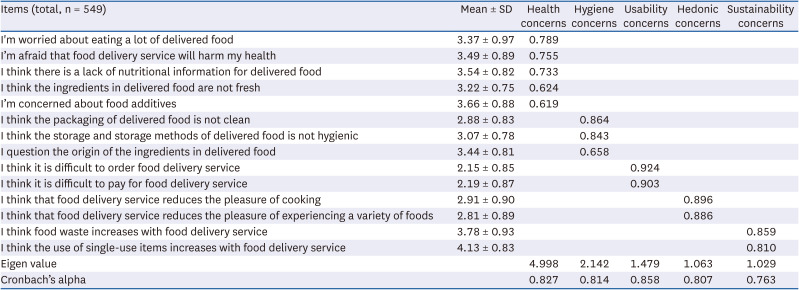
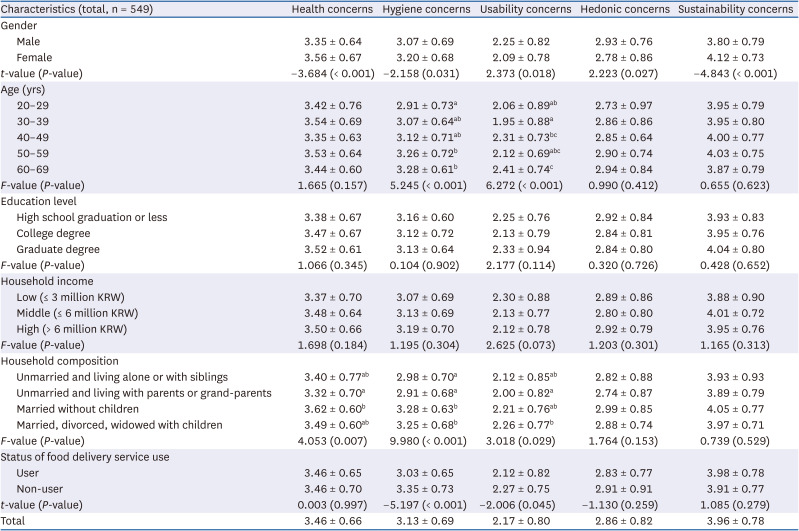
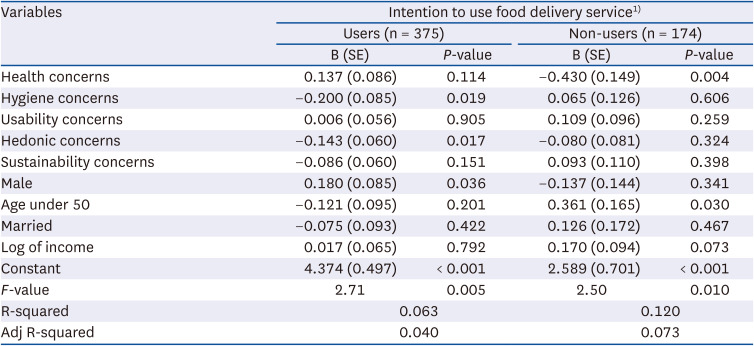




 PDF
PDF Citation
Citation Print
Print



 XML Download
XML Download